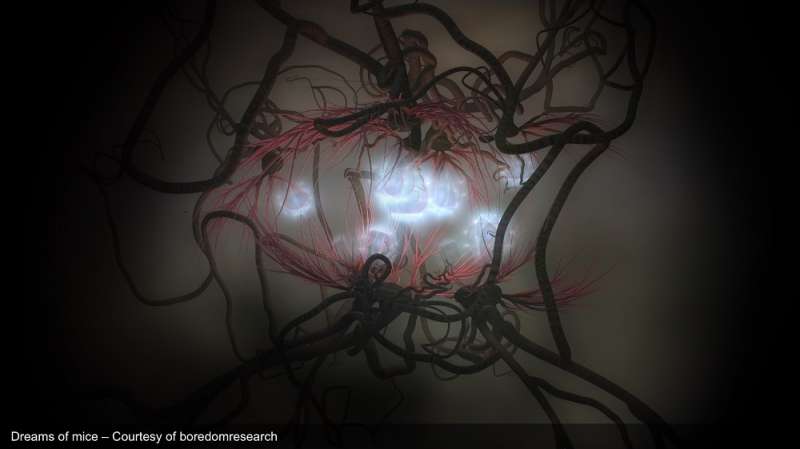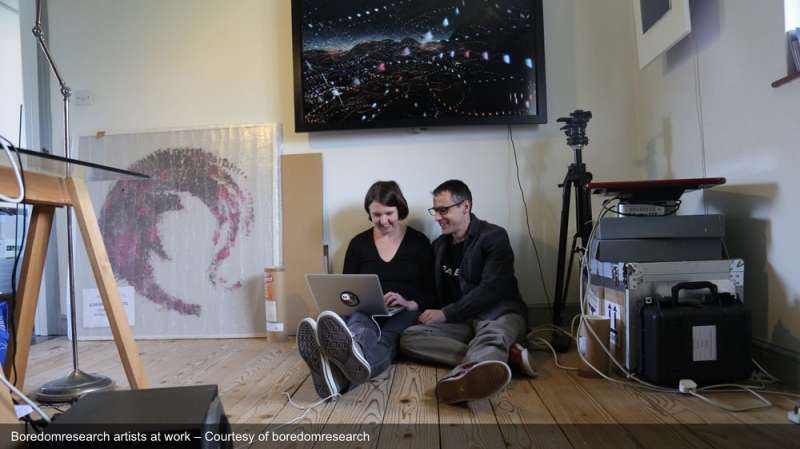The art of non-deterministic behaviour

From the dreams of a mouse to real snail email, "boredomresearch" extract the poetic dynamics of natural complex systems.
You do not necessarily need to look crazy to do crazy stuff. If you met Paul Smith and Vicky Isley in the corridors of Bournemouth University, where they teach Computer Animation, you would hardly imagine what these researchers and artists are busy with.
And you would probably be surprised to learn that one of their recent works has to do with the visual expression of the dream of a mouse, where impulses recorded through a subdermal implant are translated into a visual and acoustic dynamic enlightened by firing neurons.
The outcome of the project, completed in 2015, in collaboration with Dr. Vlad Vyazovskiy, a neuroscientist at the University of Oxford, is a rather intimate storm of neural activity recorded with a real time engine during a mouse's sleep.
Under the name of boredomresearch, Paul and Vicky form a consolidated artistic partnership that enjoys a frequent crossing of borders between science, technology and society. "We're fascinated by the form that natural phenomena can take when translated into computer based vision", says Vicky Isley.

With a more recent work, called AfterGlow, boredomresearch won the Lumen Prize in the Moving Image category. The concept was to explore the spatial qualities of disease transmission, working on data and dynamics related to the spreading of a malaria infection in a population of macaques, a project developed in cooperation with Dr Paddy Brock, a mathematical modeller at the University of Glasgow.
As a result, the viewer is taken into a landscape where the infection scenario unfolds in glowing trails, inspired by mosquito flight paths, and is then animated by the infected macaques wandering in search of food.
"We wanted to express a strong relation between the disease and the environment. Works like Afterglow challenge us in the sense of developing mathematical models to explore complex systems as they exist in nature. Our perspective is to create agents or use artificial life to develop scenarios where non-deterministic behaviour occurs, which may actually add to the complexity of the dynamics we want to observe and express", says Paul Smith.
Another undertaking by boredomresearch has to do with our society's obsession with speed. The answer of the British artists to that is the Real Snail Mail project, where real snails contribute their slow-ware share to delivering emails.

Since May 2016, boredomresearch are running a residency at the Subcultron project, a collaborative research led by the Karl-Franzens University of Graz, Austria, to deploy a broad society of autonomous little robots in the Venice lagoon.
Watch the gallery: http://www.youris.com/Society/Gallery/The-Art-Of-Non-Deterministic-Behaviour.kl
















